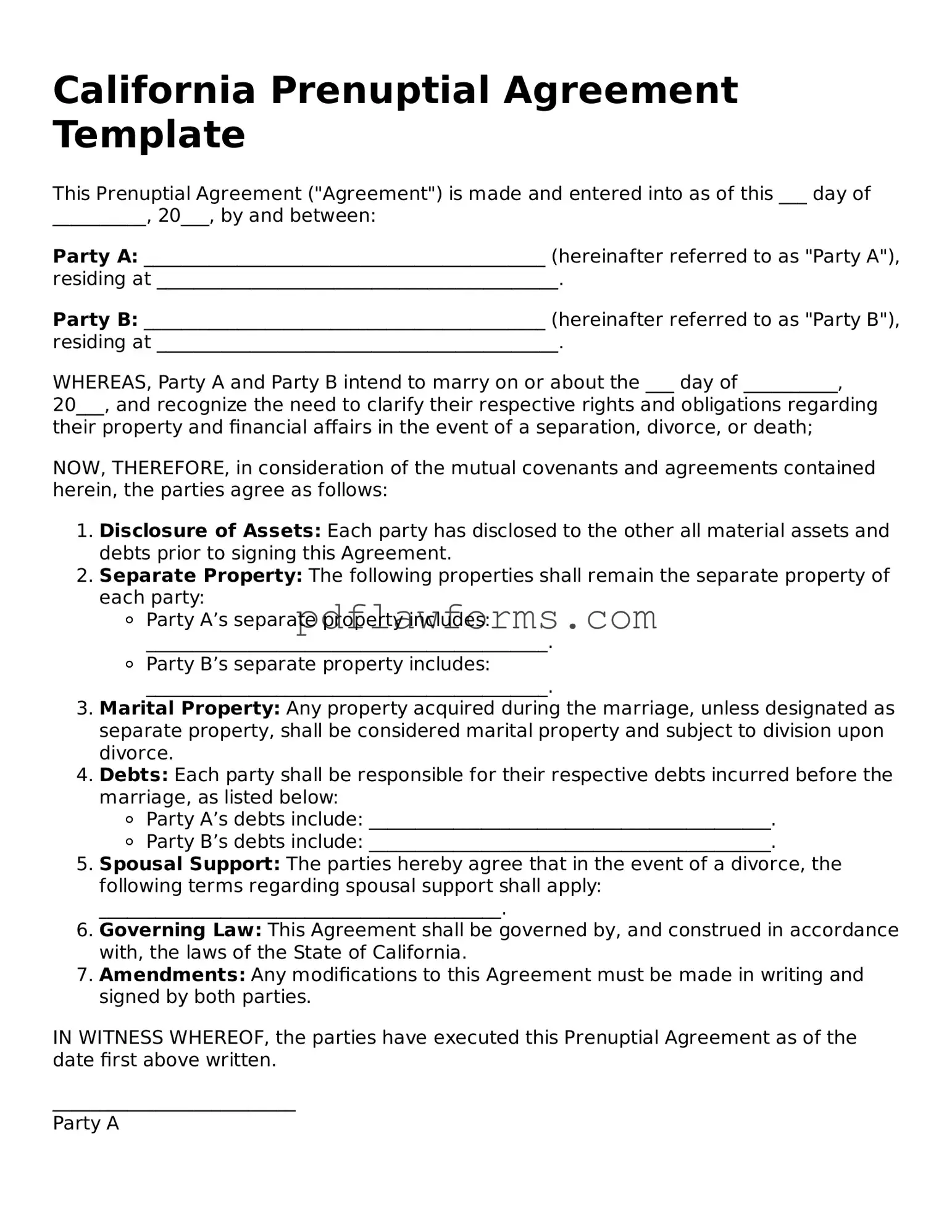Prenuptial Agreement Form for the State of California
A California Prenuptial Agreement form is a legal document that outlines the terms and conditions regarding the division of assets and responsibilities in the event of a divorce. This form allows couples to establish their financial rights and obligations before entering marriage, providing clarity and protection for both parties. To ensure your interests are safeguarded, consider filling out the form by clicking the button below.
Make My Document Online
